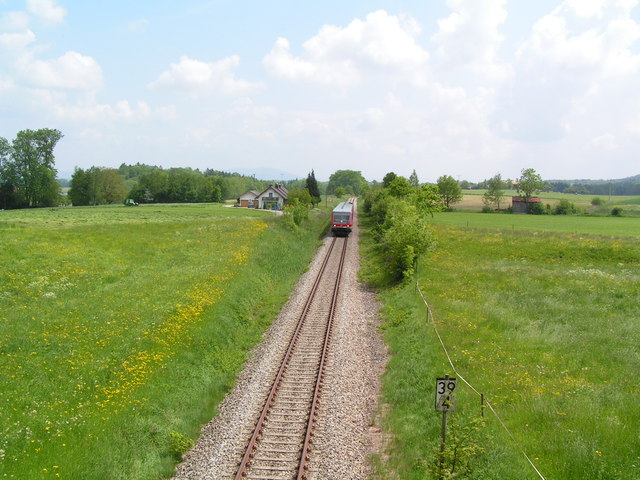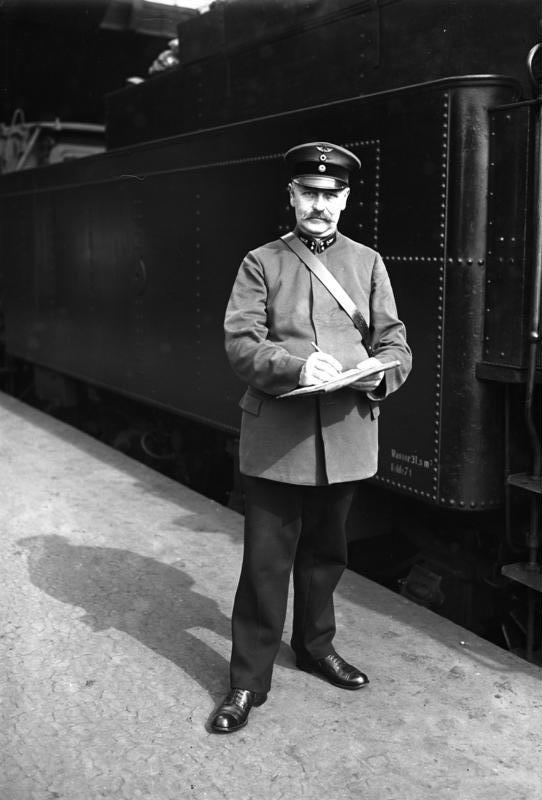|
Mühldorf–Freilassing Railway
The Mühldorf–Freilassing railway is a major railway in Bavaria. The line, which is operated by the Südostbayernbahn (SOB) (part of Deutsche Bahn), runs from Mühldorf to Freilassing in the German state of Bavaria. History The rail link between Mühldorf and Freilassing was opened on 1 December 1908 as one of the last sections opened by Royal Bavarian State Railways. The line, which was conceived as an approach line to the Tauern Railway and was designated therefore as the "Bavarian Tauern Railway" (''bayerische Tauernbahn''), was created by linking and upgrading existing local line segments: *Mühldorf–Tüßling, part of the Mühldorf–Burghausen railway opened on 10 August 1897 *Freilassing-Wiesmühl, part of the Freilassing–Tittmoning branch line, opened on 14 June 1890 (Freilassing– Laufen) and 1 May 1894 (Laufen–Tittmoning). Two options were available: a route from Burgkirchen (on the Mühldorf–Burghausen line) to Wiesmühl (on the existing line to Titt ... [...More Info...] [...Related Items...] OR: [Wikipedia] [Google] [Baidu] |
Bavaria
Bavaria ( ; ), officially the Free State of Bavaria (german: Freistaat Bayern, link=no ), is a state in the south-east of Germany. With an area of , Bavaria is the largest German state by land area, comprising roughly a fifth of the total land area of Germany. With over 13 million inhabitants, it is second in population only to North Rhine-Westphalia, but due to its large size its population density is below the German average. Bavaria's main cities are Munich (its capital and largest city and also the third largest city in Germany), Nuremberg, and Augsburg. The history of Bavaria includes its earliest settlement by Iron Age Celtic tribes, followed by the conquests of the Roman Empire in the 1st century BC, when the territory was incorporated into the provinces of Raetia and Noricum. It became the Duchy of Bavaria (a stem duchy) in the 6th century AD following the collapse of the Western Roman Empire. It was later incorporated into the Holy Roman Empire, ... [...More Info...] [...Related Items...] OR: [Wikipedia] [Google] [Baidu] |
Rosenheim–Salzburg Railway
The Rosenheim–Salzburg railway is a continuous double track and electrified main line railway almost entirely within the German state of Bavaria. It is an international transport corridor, linking to Salzburg in Austria. History Planning, treaty and Munich-Rosenheim-Salzburg Railway Society The first plan for a railway line between Rosenheim and Salzburg was in Friedrich List’s proposal in September 1828, which laid out as the main lines of the Bavarian network, a line from Bamberg via Nuremberg, Augsburg and Memmingen to Lindau, another from Kitzingen via Nuremberg and Augsburg to Munich and a third from Günzburg via Augsburg and Munich towards Austria. Simon Freiherr von Eichthal, a banker to the King of Bavaria, also called for a railway from Munich to Salzburg in 1835. On 5 January 1836, von Eichthal began a preliminary investigation of the building of the line. A messenger of the Bavarian government reported to the Austrian government on 7 April 1836 on the planned cons ... [...More Info...] [...Related Items...] OR: [Wikipedia] [Google] [Baidu] |
Neumarkt-Sankt Veit – Landshut Railway
The Neumarkt-Sankt Veit–Landshut railway is a single-tracked, unelectrified Main line (railway), main line in Bavaria in southern Germany. It is operated by SüdostBayernBahn (a subsidiary of Deutsche Bahn). History Construction of the line from Landshut to Neumarkt a. Rott (now Neumarkt-Sankt Veit) was authorised on 1 February 1880 and the 38.88 km long route was opened on 4 October 1883. Initially the permitted speed on the route was just 30 km/h. On 1 June 1889 the railway was designated as a main line and its top speed raised to 50 km/h. Operation In the 2009 timetable 37 passenger trains and 8 goods trains will work the line daily. Regionalbahn trains run generally every hour between Salzburg (every 2 hours), Rosenheim and Landshut. Occasionally trains from Landshut also travel over the Mühldorf–Burghausen railway to Burghausen, Altötting, Burghausen. Passenger services are provided by DB Class 628, Class 628 multiples. Since 10 June 2007 sch ... [...More Info...] [...Related Items...] OR: [Wikipedia] [Google] [Baidu] |
Salzburg Central Station
Salzburg Hauptbahnhof (German for Salzburg main station; abbreviated Salzburg Hbf and occasionally translated as Central Station) is the main railway station in Salzburg, capital of the federal state of Salzburg in Austria. It is the most important station in the agglomeration of Salzburg, and a major transportation hub in western Austria. Overview For a long time, Salzburg Hauptbahnhof has been a border station at the Austrian border with Germany. It serves both the Austrian Federal Railways (ÖBB) and the Deutsche Bahn AG. It also forms a junction between several ÖBB local and long-distance transport routes. At Salzburg Hbf, the Western Railway from Vienna and Linz links with the Rosenheim–Salzburg railway, on which, along with international trains, so-called ÖBB corridor services make express connections with the Tyrol and the Vorarlberg, via the ''German Corner'' at Rosenheim. Another main line, the Salzburg-Tyrol railway, heads from Salzburg Hbf in a southerly direct ... [...More Info...] [...Related Items...] OR: [Wikipedia] [Google] [Baidu] |
Deutsche Reichsbahn
The ''Deutsche Reichsbahn'', also known as the German National Railway, the German State Railway, German Reich Railway, and the German Imperial Railway, was the German national railway system created after the end of World War I from the regional railways of the individual states of the German Empire. The ''Deutsche Reichsbahn'' has been described as "the largest enterprise in the capitalist world in the years between 1920 and 1932"; nevertheless its importance "arises primarily from the fact that the Reichsbahn was at the center of events in a period of great turmoil in German history". Overview The company was founded on 1 April 1920 as the ("German Imperial Railways") when the Weimar Republic, which still used the nation-state term of the previous monarchy, (German Reich, hence the usage of the in the name of the railway; the monarchical term was ), took national control of the German railways, which had previously been run by the German states. In 1924 it was reorgan ... [...More Info...] [...Related Items...] OR: [Wikipedia] [Google] [Baidu] |
Burgkirchen An Der Alz
Burgkirchen an der Alz is a municipality in the district of Altötting, in Bavaria, Germany. It is situated on the river Alz The Alz () is a river in Bavaria, southern Germany, the only discharge of the Chiemsee. Its origin is on the northern shore near Seebruck. It is a right tributary of the Inn, into which it flows in Marktl. Other towns on the Alz are Altenmarkt an ..., 8 km west of Burghausen. References Altötting (district) {{Altöttingdistrict-geo-stub ... [...More Info...] [...Related Items...] OR: [Wikipedia] [Google] [Baidu] |
Laufen, Germany
Laufen (Central Bavarian: ''Laffa an da Soizach'') is a town in Berchtesgadener Land district in Bavaria at the Austria–Germany border. History It was first mentioned in a deed of 748. The rapids that gave the town the name (Laufen = rapid running waters) were also responsible for the town's wealth from the salt trade. Small boats that transported the extremely valuable cargo from the rapids north of Salzburg were reloaded at Laufen to larger boats by privilege of the Prince-Archbishop of Salzburg. When the independent principality was finally divided in 1816 between the Bavarian kingdom and the Habsburg Empire in the wake of the Napoleonic Wars, the town was split into a Bavarian part carrying the name of Laufen and into an Austrian town (the former Laufen suburbs on the right hand side of the river) by the name of Oberndorf. With the building of railways by the middle of the 19th century the transport of salt on the river Salzach came to an end, taking away the former source ... [...More Info...] [...Related Items...] OR: [Wikipedia] [Google] [Baidu] |
Tittmoning
Tittmoning () is a town in the district of Traunstein, in Bavaria, Germany. Geography It is situated in the historic Rupertiwinkel region, on the left bank of the river Salzach, which forms the border with the municipality of Ostermiething in the Austrian state of Salzburg. The two communes are linked by a bridge. Tittmoning is located about northwest of the Salzburg city centre. History The settlement of ''Titamanninga'' was first mentioned about 790 AD, then a possession of St Peter's Abbey, Salzburg. After the Archbishops of Salzbug had achieved immediate status in the late 13th century, Tittmoning Castle was built as a border fortress against the incursions by the Dukes of Bavaria. The episcopal administrator of the castle and its environs was called burgrave (''Burggraf''), as was Ulrich von Wispeck in 1282. Tittmoning was occupied by the forces of the German king Louis the Bavarian during his conflict with the papacy in 1324; nevertheless, he restored it to the Salz ... [...More Info...] [...Related Items...] OR: [Wikipedia] [Google] [Baidu] |
Tauern Railway
The Tauern Railway (german: Tauernbahn) is an Austrian railway line between Schwarzach- Sankt Veit in the state of Salzburg and Spittal an der Drau in Carinthia. It is part of one of the most important north-south trunk routes (''Magistrale'') in Europe and also carries tourist traffic for the Gastein Valley. The standard gauge railway line is long and climbs the High Tauern range of the Central Eastern Alps with a maximum incline of 2.5%, crossing the Alpine crest through the long Tauern Tunnel. It is one of the highest standard gauge railways in Europe and the third highest in Austria. History Since the opening of the Suez Canal in 1869, the Cisleithanian government of Austria-Hungary had urged for a direct connection of the restored main Austrian seaport at Trieste with the Bohemian coalfields and iron works in the northern parts of the Monarchy. After lengthy discussions, the building of the ''Tauernbahn'' was set up as a part of the larger "New Alpine Railways" inve ... [...More Info...] [...Related Items...] OR: [Wikipedia] [Google] [Baidu] |
Royal Bavarian State Railways
The Royal Bavarian State Railways (''Königliche Bayerische Staats-Eisenbahnen'' or ''K.Bay.Sts.B.'') was the state railway company for the Kingdom of Bavaria. It was founded in 1844. The organisation grew into the second largest of the German state railways (after that of the Prussian state railways) with a railway network of 8,526 kilometres (including the Palatinate Railway or ''Pfalzbahn'') by the end of the First World War. Following the abdication of the Bavarian monarchy at the end of the First World War, the 'Royal' title was dropped and on 24 April 1920 the Bavarian State Railway (''Bayerische Staatseisenbahn''), as it was now called, was merged into the newly formed German Reich Railways Authority or Deutsche Reichseisenbahnen as the Bavarian Group Administration (''Gruppenverwaltung Bayern''). The management of the Bavarian railway network was divided into four Reichsbahn divisions: Augsburg, Munich, Nuremberg and Regensburg. The former Palatinate Railway formed ... [...More Info...] [...Related Items...] OR: [Wikipedia] [Google] [Baidu] |
Deutsche Bahn
The (; abbreviated as DB or DB AG) is the national railway company of Germany. Headquartered in the Bahntower in Berlin, it is a joint-stock company ( AG). The Federal Republic of Germany is its single shareholder. describes itself as the second-largest transport company in the world, after the German postal and logistics company / DHL, and is the largest railway operator and infrastructure owner in Europe. Deutsche Bahn was the largest railway company in the world by revenue in 2015; in 2019, DB Passenger transport companies carried around 4.8 billion passengers, and DB logistics companies transported approximately 232 million tons of goods in rail freight transport. The group is divided into several companies, including '' DB Fernverkehr'' (long-distance passenger), '' DB Regio'' (local passenger services) and '' DB Cargo'' (rail freight). The Group subsidiary '' DB Netz'' also operates large parts of the German railway infrastructure, making it the largest rail netwo ... [...More Info...] [...Related Items...] OR: [Wikipedia] [Google] [Baidu] |

.png)




